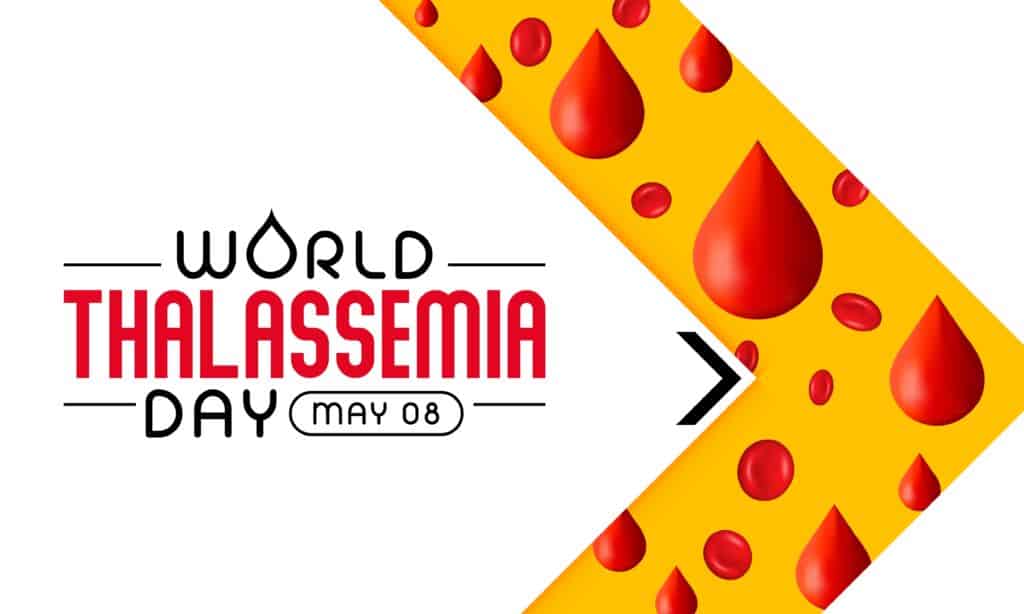Newsletter Signup - Under Article / In Page
"*" indicates required fields
A newly-approved gene therapy is transforming the lives of patients with beta thalassemia – an inherited blood disorder – by helping to stop or significantly reduce their reliance on blood transfusions, says an expert from a leading global health system, Cleveland Clinic, on International Thalassemia Day on May 8.
A gene therapy known as betibeglogene autotemcel, or beti-cel, was approved in August last year by the US Food and Drug Administration (FDA) as safe and efficacious for adult and pediatric patients with transfusion-dependent beta thalassemia.
Rabi Hanna, a pediatric hematologist-oncologist at Cleveland Clinic Children’s – which is in the process of becoming one of the few centers in the world certified to offer the gene therapy – said: “This is a milestone in thalassemia treatment as gene therapy uses patients’ own hematopoietic stem cells to produce healthier red blood cells and cure their blood disorder – or at the very least, significantly reduce the number of blood transfusions needed to manage their condition. Thanks to gene therapy, we can remove the challenges that thalassemia patients face and give them the potential to pursue their goals and dreams without the restriction of blood transfusion or complications of iron overload.”
Thalassemia, which has two types – alpha and beta – is among the most common genetic disorders and occurs most frequently in people from the Middle East, Mediterranean countries, North Africa, India, Central Asia, and Southeast Asia.
Beta thalassemia affects the body’s ability to produce hemoglobin, a protein in red blood cells that allows them to transport oxygen throughout the body. Individuals diagnosed with beta thalassemia major develop serious symptoms at a young age, which can be treated with frequent blood transfusions, but the transfusions themselves create the risk of iron overload with the potential to damage patients’ liver, heart, and endocrine system.
New gene therapy
The new gene therapy, which resolves this problem, is ideal for teenagers or slightly older patients who have already started to experience complications from blood transfusions, Hanna said.
Hanna said: “The gene therapy includes a short period (four days) of a chemotherapy called busulfan that may impact on male and female patients’ fertility, so it is better to wait until patients reach their teenage years so that they can undergo fertility-preservation treatment, although we do have methods to preserve fertility even in pre-pubescent patients. On the other hand, it is best not to leave it too long as after years of infusions, patients’ hearts and livers may have already been severely impaired from iron overload. Generally, the healthier the patients are at the start of the gene therapy process, the fewer side effects they will have.”
The minimally invasive beti-cel treatment is delivered in three phases over several months, Hanna said. In the first phase, two medications (G-CSF and plerixafor) are used to stimulate the patient’s bone marrow to produce more stem cells. In the second, blood is drawn for stem cell collection from peripheral blood, and these stem cells are sent to the treatment company to perform the gene modification, that is, inserting a gene that enables them to produce non-affected hemoglobin. The modification process takes around two months.
The final phase takes place in a hospital so patients can be closely monitored. They receive a single chemotherapy medication once a day for four days, followed by a few days of rest, to prepare the body for the modified stem cells to be reintroduced through infusion into a vein, similar to an IV drip.
Within about a month after the infusion of the modified cells, Hanna noted, the vast majority of patients will engraft with the new stem cells and will not need any more blood transfusions or other treatments as they will have cells established in their bone marrow capable of producing hemoglobin normally. Even in the few exceptional cases where gene therapy is not curative, patients’ need for blood transfusions will have been reduced substantially.
Additional advances in treatment
Aside from the new gene therapy treatment, other advances in recent years have greatly improved the quality of life for thalassemia patients, Hanna said.
A medication with the generic name luspatercept-aamt was approved by the FDA in 2019 to reduce patients’ reliance on blood transfusions. It is given in the form of an injection every three weeks and works by enhancing erythroid (red blood cell) maturation and reducing the need for blood transfusions by up to 50% in some patients.
Luspatercept-aamt can also be used to enhance outcomes in curative bone marrow transplantations, which have become more widely accessible in recent years thanks to a new transplant approach. Hanna was among the pioneers of the haplo-identical bone marrow transplant, which allows for non-identical-HLA (human leukocyte antigen) donors.
Hanna said the reduction in blood transfusions enabled by luspatercept-aamt means the patient has better health prior to bone marrow transplants, and fewer antibodies that could potentially attack transplanted bone marrow.
“With the wider adoption of gene therapy and the use of luspatercept-aamt to improve bone-marrow transplant outcomes, almost any patient can be cured,” Hanna said.






